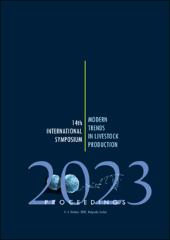| dc.description.abstract | Listeria is a microorganism widely distributed in nature and can be
found in different types of ecological surroundings, water, wastewater, soil,
different types of food, organs, and excreta of animals and humans. The effect of
pathogens on health status in animals and humans is very similar. A perinatal and
adult form of the disease is present. The course of the perinatal form is most often
asymptomatic in females, with mild flu-like symptoms 2 weeks before the
abortion. The clinical findings in adults are manifested by the appearance of
meningitis with accompanying nervous symptoms. For livestock production,
especially in cattle, infection with listeria can lead to abortion, which on the one
hand leads to significant economic losses, while on the other hand, since it is a
zoonosis, it threatens the health safety of farm employees. Considering that Listeria
represents ubiquitous microorganisms, as well as the fact that, in addition to
listeria, cow abortions can be caused by various other microorganisms (viruses,
bacteria, or protozoan parasites), it is not easy to precisely diagnose the biotic or
abiotic causes of abortion. In our study, we monitored the presence of Listeria
monocytogenes in aborted fetuses of cows. Our goal is to determine the prevalence
of these microorganisms in the analyzed samples as well as their importance for the
occurrence of abortions and animal health. In 3.5 years, we analyzed a total of 65
aborted samples, of which 7 were positive for Listeria monocytogenes. It can be
concluded that a relatively small number of samples were examined in the
observed period, which indicates a low interest of livestock keepers in monitoring
abortion samples. On the other hand, concerning the number of examined
materials, the percentage of Listeria isolates (>10%) is relatively high. | en_US |

